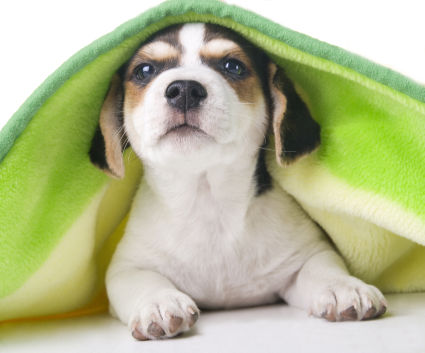A lot of dogs love cold winter weather and a bounty of snow in which to play. While this outdoor exercise may prove to be just what Rover needs, it is important that pet owners be responsible and take extra precautions to protect their dog’s feet from the hazards that winter brings with it.
One of the most important precautions is to keep the dog’s nails trimmed. Long nails cause a dog to spread his or her toes when they walk. This means that there is more room for snow and ice to build up, making it painful for the dog to walk.
Nails that are too long can also have an effect on the dog’s weight distribution. Long nails cause the weight to be placed onto the back of the feet. This can be a bad thing because it means less traction. Dogs can slip and injure themselves in much the same way that humans can.
It is important to keep the hair between the dog’s pads trimmed. If the hair it not trimmed, it makes it easier for snow and ice to stick to the fur and build up into clumps or balls. A good rule of thumb is to trim the hair so that it does not extend past the pads themselves. Failure to do so can cause discomfort for the dog when he or she tries to walk on balls of ice.
Dog owners must perform routine daily foot pad checks, especially during the winter months. Ice and snow melt products made from rock salt can cause a dog’s pads to dry out and crack. These cracks provide an ideal environment for snow, ice and grit to accumulate. The accumulation of debris can cause sore feet, blistering and infections. A daily examination of the feet can help you find problems and treat them before they become serious.
There are commercial products that can be applied to a dog’s pads to keep them supple. A light layer of Vaseline can be used to accomplish the same thing.
It is a good idea to wash your dog’s feet after a nice winter walk. The washing will serve to warm the dog’s feet, as well as remove harmful chemicals found in deicing products. Pay close attention to the area between the dog’s toes because this is where most of the snow, ice and grit will build up.
Dogs that love to be outdoors in winter can benefit from a pair of good boots. Not only will the boots protect the food pad surfaces. Boots can help the dog retain its body heat and lessen the threat of hypothermia. Most dogs will require a “breaking in period” to get used to wearing boots. However, once they do get used to them, they’ll be glad to lift their feet so you can help them get ready for their romp outdoors.
No matter what you do, dogs can still injure their foot pads. Frozen snow and ice are sharp and can easily injure a dog’s foot. When an injury occurs, it is important to thoroughly, but gently, clean the wound with warm water and a mild soap. Once cleaned, apply pressure to stop any bleeding. Cut pads can bleed like a stuck pig, so it may take some time to stop the bleeding. Deep cuts may require stitching. In general, paw and pad injuries are slow to heal, so you may have to curtail Rover’s outdoor activities.







0 Komentar